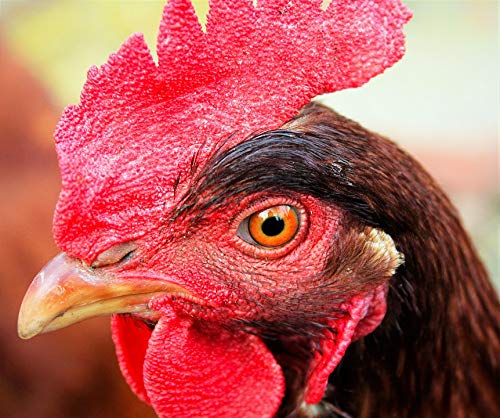Researchers from Princeton University and Washington University in St. Louis have found an unusual arrangement of cells in a chicken's eye that constitute the first known biological occurrence of a new state of matter known as "disordered hyperuniformity."
Disordered hyperuniform materials have unique properties when it comes to transmitting and controlling light waves that could lead to self-organizing colloids, or optics that can transmit light with the efficiency of a crystal and the flexibility of a liquid.
States of disordered hyperuniformity behave like crystal and liquid states of matter, exhibiting order over large distances and disorder over small distances. Like crystals, these states greatly suppress variations in the density of particles -- as in the individual granules of a substance -- across large spatial distances so that the arrangement is highly uniform. At the same time, disordered hyperuniform systems are similar to liquids in that they have the same physical properties in all directions. Combined, these characteristics mean that hyperuniform optical circuits, light detectors and other materials could be controlled to be sensitive or impervious to certain light wavelengths.
The researchers studied the light-sensitive cells known as cones that are in the eyes of chickens and most other birds active in daytime.
These birds have four types of cones for color -- violet, blue, green and red -- and one type for detecting light levels, and each cone type is a different size. The cones are packed into a single epithelial, or tissue, layer called the retina. Yet, they are not arranged in the usual way.
In many creatures' eyes, visual cells are evenly distributed in an obvious pattern such as the familiar hexagonal compact eyes of insects. In many creatures, the different types of cones are laid out so that they are not near cones of the same type. At first glance, however, the chicken eye appears to have a scattershot of cones distributed in no particular order.
It turned out that each type of cone has an area around it called an "exclusion region" that other cones cannot enter. Cones of the same type shut out each other more than they do unlike cones, and this variant exclusion causes distinctive cone patterns. Each type of cone's pattern overlays the pattern of another cone so that the formations are intertwined in an organized but disordered way -- a kind of uniform disarray.
So, while it appeared that the cones were irregularly placed, their distribution was actually uniform over large distances. That's disordered hyperuniformity,
Because the cones are of different sizes it's not easy for the system to go into a crystal or ordered state. The system is frustrated from finding what might be the optimal solution, which would be the typical ordered arrangement. While the pattern must be disordered, it must also be as uniform as possible. Thus, disordered hyperuniformity is an excellent solution.
The researchers' findings add a new dimension called multi-hyperuniformity. This means that the elements that make up the arrangement are themselves hyperuniform. While individual cones of the same type appear to be unconnected, they are actually subtly linked by exclusion regions, which they use to self-organize into patterns. Multi-hyperuniformity is crucial for the avian system to evenly sample incoming light.
Evolutionarily speaking, the researchers' results show that nature found a unique workaround to the problem of cramming all those cones into the compact avian eye,. The ordered pattern of cells in most other animals' eyes are thought to be the "optimal" arrangement, and anything less would result in impaired vision. Yet, birds with the arrangement studied here -- including chickens -- have impeccable vision.
These findings are significant because they suggest that the arrangement of photoreceptors in the bird, although not perfectly regular, are, in fact, as regular as they can be given the packing constraints in the epithelium. This result indicates that evolution has driven the system to the 'optimal' arrangement possible, given these constraints.
Sources:
Princeton University
Salvatore Torquato
"Avian photoreceptor patterns represent a disordered hyperuniform solution to a multiscale packing problem," in Feb. 24, 2014 Physical Review E.
